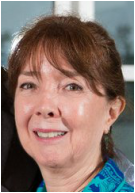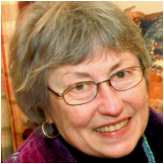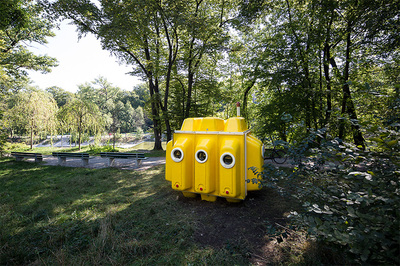|
The great secret that all old people share is that you really haven't changed in seventy or eighty years. Your body changes, but you don't change at all. And that, of course, causes great confusion. ~Doris Lessing Old age, another final frontier: and just like deep space, it is dark and unknown. In the last few decades I have watched my grandparents, aunts, mother in law, a few peers, and dozens of hospice patients age and die. I've always had friends who are much older, and in our talks over the years they share what getting older feels like, their various physical challenges, and how they are thinking about the end of life. Some cope with humor, some with different flavors of denial, some with an interesting assortment of approach and avoidance. I had been working in the well-being field, and when I applied well-being concepts to my interest in aging, I landed in cohousing. A cohousing community could be a perfect forum for support and exploration during aging. Through a great convergence of interests and opportunities, I am now a (much older than usual) student in a graduate program in Applied Gerontology, studying with a major senior cohousing researcher. I have been thinking a lot about aging lately, especially the really old years. In Gerontology class we discuss three stages of old age:
I now propose the term “Deep Aging” (TM) to describe the period of life between the beginning of old-old age and death. Deep Aging (TM) implies depth, exploration, meaning, insight, courage and subtlety, none of which is guaranteed simply by the passage of years. It conveys a life task to age deeply and meaningfully, and challenges us to pay attention and plumb its depths. My biology professor spent an entire course describing “normal age-related changes” in physical functioning. By age 80, the average person will have a reduction in maximal breathing capacity of about 55%. We will experience about a 40% reduction in kidney function. Our mitochondria (you remember from high school biology, the “powerhouse of the cell,”) will have reduced by 15%, meaning the body simply produces less energy. Collagen will degrade over time, resulting in increased stiffness. Cartilage thins, muscle mass and bone mass decrease. All of these are normal age-related changes. There are always outliers: the 90 year old who swims the English Channel, the 82 year old ballerina, the 85 year old who runs competitively. But most of us experience normal age-related changes right on schedule. An optimal diet, optimal exercise, optimal genes, optimal environment and optimal lifestyle are beneficial for a whole host of reasons. But aging will still occur, if you are lucky enough to live into your older years, and eventually you will die. And death? Ninety percent (90%) us will die from a predictable chronic illness such as heart disease, cancer, organ failure, or dementia. These deaths take time, maybe years, and the effects of illness are on top of the normal age-related changes that are also underway. So, exceptional as we all want to be, there is a good chance that we will need a plan for managing our old-old years, with or without chronic illness. Now for the good news: in cohousing, experiencing this life stage together with peers creates conditions to magnify the richness of aging, especially in the very advanced years. Even in cohousing people say “I'm not old!” or think because they have a co-care agreement with neighbors that they will be protected from the perils of aging. We have seen cohousers die at home as they intended, but other long-term cohousers leave the community to move to assisted living or a nursing home because their needs exceeded what they were able to manage, for different reasons. We have an opportunity in cohousing to explore Deep Aging (TM) with the courage and innovation that brought us to cohousing in the first place, and make our communities liveable into our old-old years. Some communities are actively discussing end of life issues, and some are finding ways to make their intergenerational community more age-friendly. With openness and creative thinking, cohousers can figure out how to make aging in place in community a reality for our members. Old age is always fifteen years older than I am. - Oliver Wendell Holmes  Nancy Francis is currently a late-middle-aged student in University of North Carolina Wilmington's Masters of Applied Gerontology program, building on her earlier-in-life Masters in Eastern Studies and Comparative Psych and is also a licensed attorney, which seemed like a good idea at the time. She lives with her family in North Carolina. Editor's note: Nancy Francis is on the Advisory Board for the upcoming Aging Better Together conference in Salt Lake City, Utah, May 20-21, 2016. There will be presentations, workshops, panel discussions, etc. on all aspects of aging in community. Plan to join the fun! Registration will open in early January, 2016. Mark your calendar now to save the dates! In the next few weeks, cohousers interested in tackling the issues around Deep Aging (TM), aging in place in community and all the attendant co-care issues will begin a national conversation to address these challenges. For more information contact: Ann Zabaldo. Arlington EcoVillage Happy Hour, Arlington, Virginia, Wednesday, December 30, 6:00 p.m. Sign up via the Washington-DC-Area-Cohousing Meet Up. You can still cut your own tree and have it trimmed by Christmas -- just do it before Christmas Eve! Hundredfold Farm (Orrtanna, Pennsylvania) is one of the few cohousing communities which has a community owned and operated business: a Christmas tree farm. And as it's the season ... at Seven Springs Tree Farm you can cut your own tree on Fridays (10a-6 p) and Saturdays and Sundays (8a-6p). Heads up: The Farm will be closed on Christmas Eve. After you've lassoed and tied down your tree atop your car stop by their neighbors at Halbrendt Vineyard and Winery. Heathcote Community (Freehand, MD) has scheduled a Visitor Day for Saturday, February 20, 2016. Come have FUN and learn about this innovative community just outside Baltimore, Maryland. Fail-Safe Slow Cook Turkey & Next-Day Turkey Soup Recipes  Sharon Villines Takoma Village Cohousing FOR A LARGE TURKEY, THE NIGHT BEFORE Preheat oven to 300 degrees. Wash and stuff the turkey. Coat surface with oil or butter or nothing. I cook the turkey on top of a bed of stuffing in a large enough pan. If you want to make gravy, cook the additional stuffing separately so you can save the drippings. I use Pepperidge Farm Herb Dressing and add onions, butter, and sometimes cranberries or celery. You can add anything you like. You can also make your own stuffing, of course, but why duplicate the masters? Cook the turkey at 300 for one hour to kill surface bacteria and seal the surface. Turn the temperature down to 165, the “done” temperature for turkey. This is the key to slow cooking. The dish will never be over-cooked. All flavors and texture will be unharmed. Cook 1 hour for each pound. Watch the oven temperature—many ovens have difficulty maintaining low temperatures. Crack the door if it gets too hot. The oven may only turn on for a few minutes every hour or so. Use a meat thermometer to ensure that the turkey is done. (The pop-up button that ensures that a turkey is done may over cook or undercook a turkey using this method — or any method, actually. SOME OVENS TURN THEMSELVES OFF AT ~12 HOURS, so may have to reset them. Only the turkey is fail-safe. I can’t control your oven. NEXT-DAY TURKEY SOUP DAY ONE After dinner: Do not let people take all the left-over meat and dressing. (You may need help. Weapons are usually not necessary.) Save the dressing aside so people can put it in their soup or eat as a side dish. Put all bones, skin, etc., in a large pot and add water to cover. If some bones are sticking up, just push them down periodically while cooking until they stay down. Add 1-3 tablespoons of vinegar depending on the size of the pot to leech calcium out of the bones. The vinegar will cook off so no taste will remain or what does will blend with other flavors. Put onions, parsley, celery, etc. in with the bones. You can cut them into large pieces, just small enough to fit in the pan. Strong simmer until the connecting tissue is soft and the bones just begin to fall away — about 4 hours or so. Put the whole pot with the bones and vegetables in the fridge or if it is cold enough, outdoors. Put a stone on the cover outside if you have raccoons or large cats. Leave it for 12-24 hours to leech more calcium out of the bones and allow the flavors to blend. DAY TWO: Scoop off the big globs of fat on the top. You don’t have to be meticulous about this. You want plenty left for taste and nourishment. Remember, this is a one pot fills all meal. Warm the pot so the soup stock is completely melted. Cool until safe to handle and pour the soup through a colander into another pot. With the solids now in the colander, pick out the loose pieces of meat and any remaining on the bones. Mush the meat carefully by hand to be sure there are no small bones. Set the meat aside and throw out all the solids. The vegetables will be cooked to a mush of tasteless fiber but don’t cry over them. All the taste and minerals stay in the broth. If you want to remove more fat, you can put the pot of liquid back in the fridge so it floats to the top and becomes solid. Or use a baster to siphon it off. But remember, a lot of the flavor is in the fat. Don’t over do it. Boil the liquid down until it has a rich taste, usually reducing it by 1/4 to 1/3. This depends on how much water you used on Day One. Hearten up. The soup is almost done. Season and add whatever else you want in the soup — carrots, celery, beans, rice, noodles, etc. — and cook until they are done. Add left over turkey just in time to heat it thoroughly. Heat dressing separately if desired. (I like cold stuffing.) I use soy sauce instead of salt because it gives a richer color. Soup stock can be really ugly and I’ve never been successful in the clarifying techniques recommended in cookbooks. (You probably lose flavor anyway when you swirl eggs around in it.) I like Old Bay for poultry. Then I just smell stuff on the spice rack and decide if I want it or not. Sage is good in turkey soup. Some butter gives a nice aftertaste. It doesn’t have to be a lot. A very small amount adds flavor. Fail-Safe Slow Cooking Turkey sounds like a lot of work but it isn’t. Most of the time things are just cooking by themselves. Sharon Villines Fail-Safe Slow Cooking Turkey & Next Day Soup Takoma Village Cohousing TakomaVillage.org Washington DC 202-722-1727 [email protected] Recipe posted online at: http://www.sharonvillines.com/fail-safe-slow-cooking-turkey-and-turkey-soup/ You can download all the recipes from Thanksgiving AND Sharon's wonderful Fail-Safe recipe for cooking a holiday turkey right from our website! EDI-BITS Wondering what to do with that old 727 sitting in your back yard? Convert it into a home, of course! Or a hotel. Or restaurant. Who knew there are actually people doing this? Wikipedia. Yellow Submarine: A pop-up bedroom made up of 16 bath tubs ... erected in Munich as part of a contest to showcase good design for affordable housing. Although it's "just a bedroom" the designers of Yellow Submarine along with 23 other sets of competitors showed what could be done easily, affordably and with a festive bent. The contestants were limited to a budget of $273.30 US. HUH?Wanna have a contest? What fun contests about "life in cohousing" would you like to see? Send your suggestions to: Ann Zabaldo. Or you can comment on our blog. Open to all clean & green, natural, organic, cage & steroid-free contests ... You can leave comments below. We welcome them! Cruise around earlier blog posts and other parts of the website. Look for FREE downloads! Subscribe!
Subscribe to our newsletter! ! We don't trade names, we don't spam and we're all around lovely people! Just go to our HOME PAGE and sign up by clicking the button in the middle of the page!
0 Comments
Your comment will be posted after it is approved.
Leave a Reply. |
Categories
All
AuthorAnn Zabaldo is a passionate promoter of cohousing. She was on the develoment team for Eastern Village in Silver Spring, MD and Takoma Village in Washington, DC where she lives. She serves on the Board for MAC. Archives
February 2017
See cool blog for Emerson Commons.
Image Credit:
Nathan Dumlao |
|
Website by Erin McMichael
© COPYRIGHT 2023. ALL RIGHTS RESERVED MID-ATLANTIC COHOUSING |
ResourcesProgramsBlogCommunities |
DonateMembershipAboutContact Us |
|
SUBSCRIBE |











 RSS Feed
RSS Feed